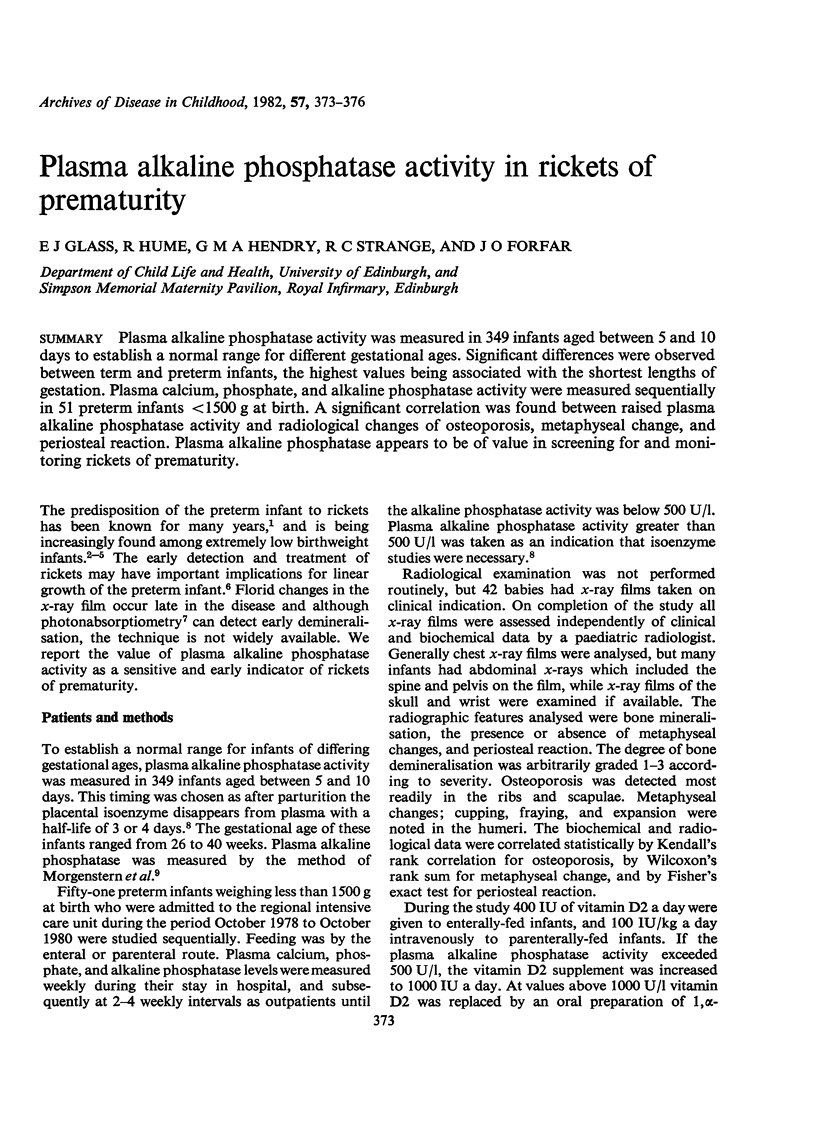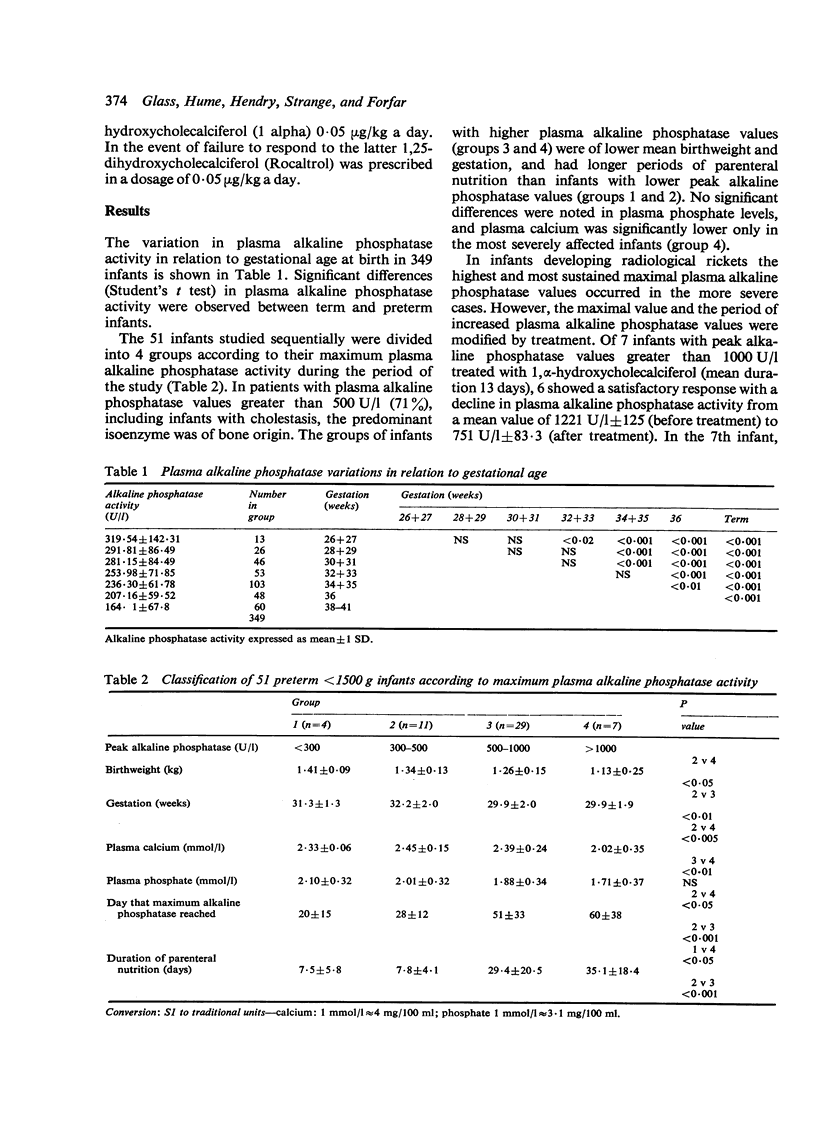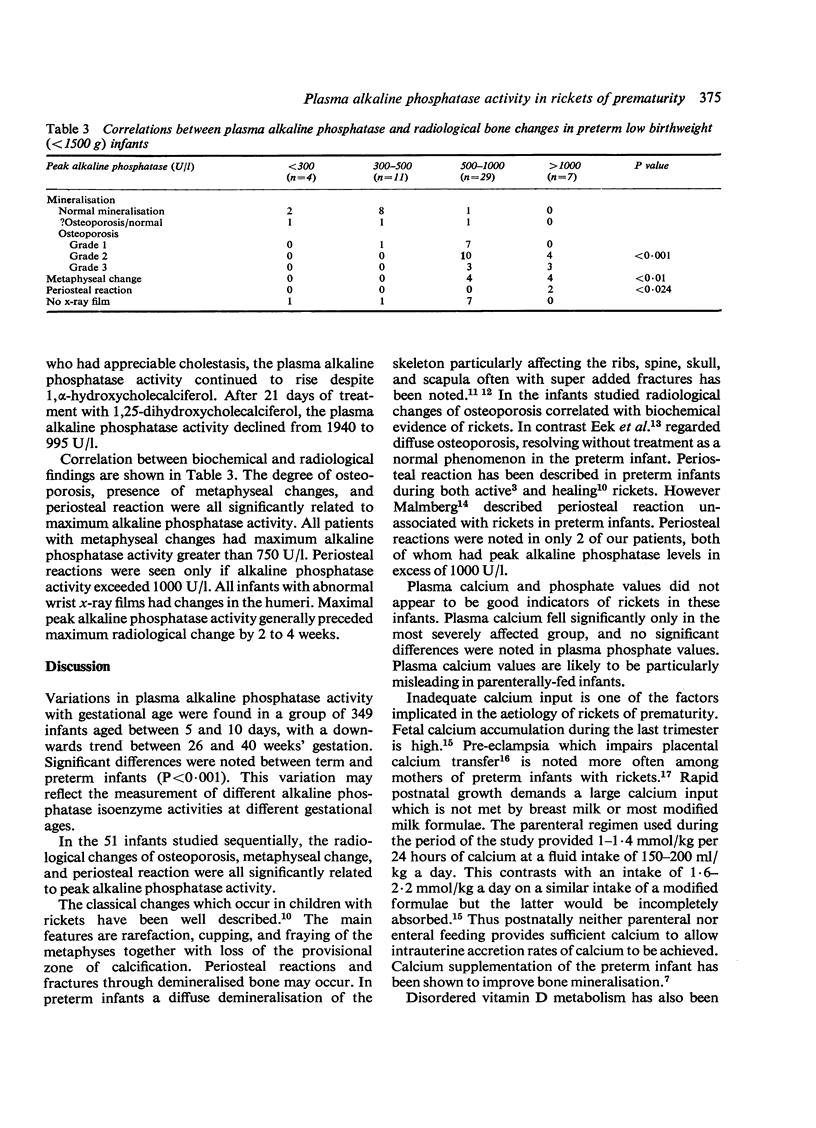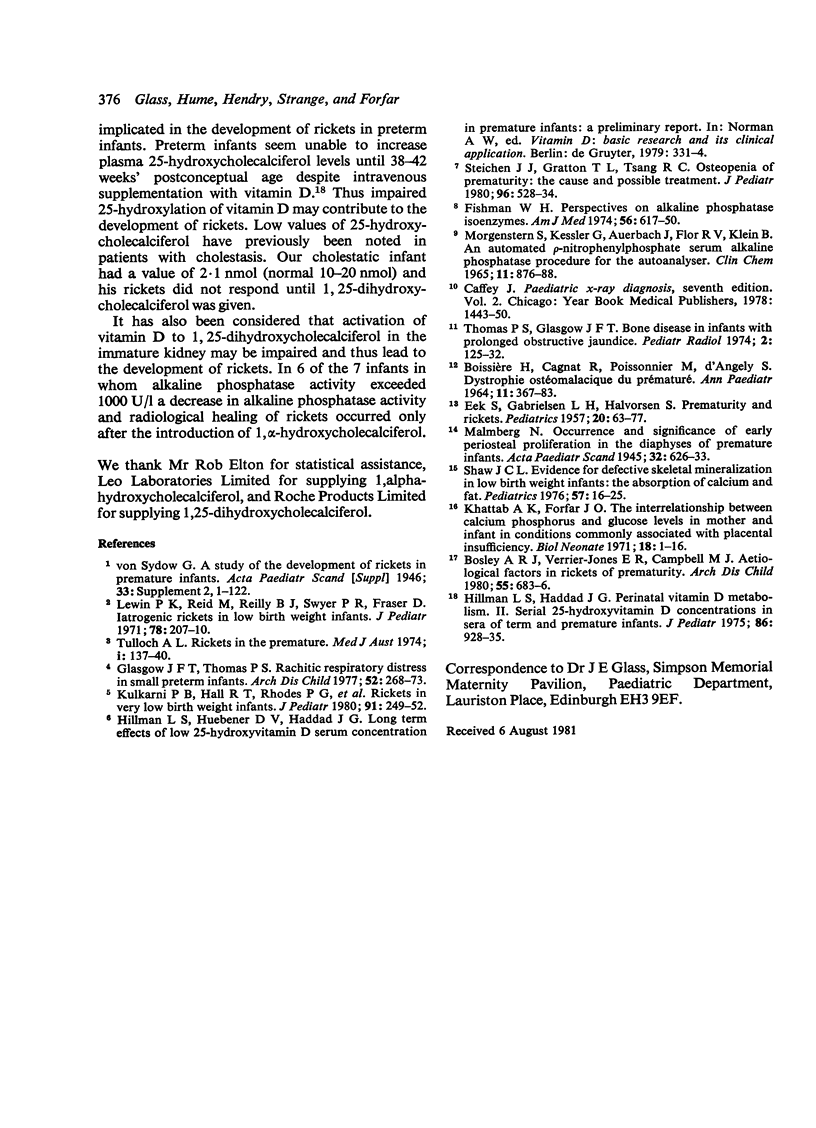Abstract
Plasma alkaline phosphatase activity was measured in 349 infants aged between 5 and 10 days to establish a normal range for different gestational ages. Significant differences were observed between term and preterm infants, the highest values being associated with the shortest lengths of gestation. Plasma calcium, phosphate, and alkaline phosphatase activity were measured sequentially in 51 preterm infants less than 1500 g at birth. A significant correlation was found between raised plasma alkaline phosphatase activity and radiological changes of osteoporosis, metaphyseal change, and periosteal reaction. Plasma alkaline phosphatase appears to be of value in screening for and monitoring rickets of prematurity.
Full text
PDF



Selected References
These references are in PubMed. This may not be the complete list of references from this article.
- BOISSIERE H., CAGNAT R., POISSONNIER M., D ANGELY S. DYSTROPHIE OST'EOMALACIQUE DU PR'EMATUR'E. Ann Pediatr (Paris) 1964 Jan-Jul;11:367–383. [PubMed] [Google Scholar]
- Bosley A. R., Verrier-Jones E. R., Campbell M. J. Aetiological factors in rickets of prematurity. Arch Dis Child. 1980 Sep;55(9):683–686. doi: 10.1136/adc.55.9.683. [DOI] [PMC free article] [PubMed] [Google Scholar]
- EEK S., GABRIELSEN L. H., HALVORSEN S. Prematurity and rickets. Pediatrics. 1957 Jul;20(1 Pt 1):63–77. [PubMed] [Google Scholar]
- Fishman W. H. Perspectives on alkaline phosphatase isoenzymes. Am J Med. 1974 May;56(5):617–650. doi: 10.1016/0002-9343(74)90631-7. [DOI] [PubMed] [Google Scholar]
- Glasgow J. F., Thomas P. S. Rachitic respiratory distress in small preterm infants. Arch Dis Child. 1977 Apr;52(4):268–273. doi: 10.1136/adc.52.4.268. [DOI] [PMC free article] [PubMed] [Google Scholar]
- Hillman L. S., Haddad J. G. Perinatal vitamin D metabolism. II. Serial 25-hydroxyvitamin D concentrations in sera of term and premature infants. J Pediatr. 1975 Jun;86(6):928–935. doi: 10.1016/s0022-3476(75)80231-9. [DOI] [PubMed] [Google Scholar]
- Khattab A. K., Forfar J. O. The interrelationship between calcium, phosphorus and clucose levels in mother and infant in conditions commonly associated with 'placental insufficiency'. Biol Neonate. 1971;18(1):1–16. doi: 10.1159/000240341. [DOI] [PubMed] [Google Scholar]
- Kulkarni P. B., Hall R. T., Rhodes P. G., Sheehan M. B., Callenbach J. C., Germann D. R., Abramson S. J. Rickets in very low-birth-weight infants. J Pediatr. 1980 Feb;96(2):249–252. doi: 10.1016/s0022-3476(80)80814-6. [DOI] [PubMed] [Google Scholar]
- Lewin P. K., Reid M., Reilly B. J., Swyer P. R., Fraser D. Iatrogenic rickets in low-birth-weight infants. J Pediatr. 1971 Feb;78(2):207–210. doi: 10.1016/s0022-3476(71)80002-1. [DOI] [PubMed] [Google Scholar]
- Morgenstern S., Kessler G., Auerbach J., Flor R. V., Klein B. An automated p-nitrophenylphosphate serum alkaline phosphatase procedure for the AutoAnalyzer. Clin Chem. 1965 Sep;11(9):876–888. [PubMed] [Google Scholar]
- Shaw J. C. Evidence for defective skeletal mineralization in low-birthweight infants: the absorption of calcium and fat. Pediatrics. 1976 Jan;57(1):16–25. [PubMed] [Google Scholar]
- Steichen J. J., Gratton T. L., Tsang R. C. Osteopenia of prematurity: the cause and possible treatment. J Pediatr. 1980 Mar;96(3 Pt 2):528–534. doi: 10.1016/s0022-3476(80)80861-4. [DOI] [PubMed] [Google Scholar]
- Thomas P. S., Glasgow J. F. Bone disease in infants with prolonged obstructive jaundice. Pediatr Radiol. 1974;2(2):125–132. doi: 10.1007/BF01314943. [DOI] [PubMed] [Google Scholar]
- Tulloch A. L. Rickets in the premature. Med J Aust. 1974 Feb 2;1(5):137–140. doi: 10.5694/j.1326-5377.1974.tb47686.x. [DOI] [PubMed] [Google Scholar]


